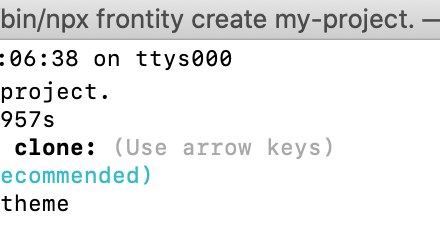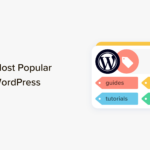There’s been enough talk lately about how to create content within WordPress that it warrants further attention. While there are technically still the same number of available options – i.e., the native editor or a third-party page builder plugin – choosing between them is causing confusion thanks to the new Block Editor.
In fact, the decision between the two is often simple. While the Block Editor and your favorite page builder may look similar on the surface, there are plenty of inherent differences. This means if you take the time to compare them directly and bring your client’s needs into play, choosing to opt for one or the other is a piece of cake.
In this article, we’ll compare what it’s like to use page builders versus the new Block Editor. More importantly, we’ll talk about how to help your clients choose the right solution for them. Let’s get started!
Dispatches From the Front Line: Page Builders vs the Block Editor
While there hasn’t exactly been an upsurge in negative opinions towards page builders, many have begun to reconsider which solution is best for business.
This is because the Block Editor is a native way to create content, yet offers a similar approach to what a page builder provides. We’ll get into the specifics later, but in short, the new editor’s introduction begs the question – is it a sufficient replacement for older page building tools?
Why There’s Confusion Over Choosing a Page Builder vs the Block Editor
If we had to say why there’s been confusion over which option to pick, we’d begin with the marketing behind the Block Editor. Of course, there’s bound to be a degree of hype driving any radical new feature – especially one that can split opinion so easily.
In other words, the Block Editor was touted as a huge deal (and it is). To those within the WordPress community, it’s relatively easy to grasp the scope of what the Block Editor can do, and what it can’t handle. However, for the end user, that isn’t so clear.
The primary ‘selling point’ for the Block Editor was all about how it will change the way people use WordPress. There’s no inherent problem with that, and the new editor does bring some significant changes. However, an end user hearing all the positive talk could easily assume that it’s a direct replacement for their beloved page builder tool.
After all, a native way to create layouts within WordPress? That sounds like a great idea! However, there have also been plenty of less-than-positive comments about WordPress’ newest addition. This has led many to weigh up whether using the Block Editor is really a good idea.
On the whole, the Block Editor is a useful tool. However, there are some inherent differences between it and a page builder, which are important to understand if you want to help your clients make informed decisions.
The Similarities and Differences Between Page Builders and the Block Editor
Before we discuss the differences between these two solutions, let’s look at the basic similarities:
- They enable you to use a drag-and-drop interface for creating layouts.
- Both can offer you a clearer preview of how your site looks on the front end (depending on the specific page builder).
- You can extend each by using extensions and plugins.
On the surface, this makes the two options look almost identical. However, the differences are significant enough that making the wrong decision can create serious issues.
By far the biggest distinction is that page builders can often be used to customize your entire site’s layout. With some, you can even create headers and navigation from scratch. In contrast, the Block Editor only works on specific site elements. While it offers a lot of options, those looking to edit the layout of their sites using the Block Editor will be out of luck.
It’s also worth noting that most page builders offer far more flexibility than the Block Editor does. This includes more basic elements, and often templates for sections and full pages. Depending on the tool you use, page builders can also provide more options for structuring the layout of your content. The Block Editor offers a very basic ‘columns’ element, but page builders can enable you to use a grid system to create complex layouts of rows and columns.
What Should You Recommend Clients Use – A Page Builder or the Block Editor?
By now, you probably have some idea what the answer to this question is. Even so, let’s sum up how you can decide whether your clients should use a page builder or the Block Editor:
- If your client has a preferred method of creating layouts in WordPress and has been using it for a while, we’d suggest sticking with it. This is especially true for clients who have created their entire sites using a page builder. The Block Editor can’t yet achieve that level of functionality, although who knows what the following 12 months will bring?
- Clients with a custom theme or relatively modest requirements should definitely consider the Block Editor. It offers a lot of the same functionality as popular page builders while having the advantage of being native to WordPress.
There’s actually a middle ground you can suggest too. For example, many page builder developers have created specific blocks for use within the new editor (and outside of their own). What’s more, you could use a page builder to create most of a client’s site, apart from specific pages such as blog posts. The Block Editor would slot in there, and give your client a simple way to self-sufficiently create post layouts.
The real answer to the question of whether you should choose a page builder or the Block Editor is that you can have both, and the result will be an even more flexible WordPress website!
Conclusion
As soon as the Block Editor was announced, many site owners and content creators wondered just how this new tool would fit within their day-to-day work. Now that the Block Editor is live, some are still concerned or uncertain about its role. Fortunately, deciding whether (and how much) to use the new editor is quite simple.
As far as your clients are concerned, in most cases, their favorite page builder is still going to be the best choice. While the Block Editor is powerful, it’s not yet able to construct complex page layouts to match the likes of Elementor and Beaver Builder. That being said, many page builders are also compatible with the Block Editor. So depending on your client’s needs, they can have the best of both worlds.
What side of the fence have you fallen on – page builders or the Block Editor? Let us know in the comments section below!
Image credit: Pixabay.











